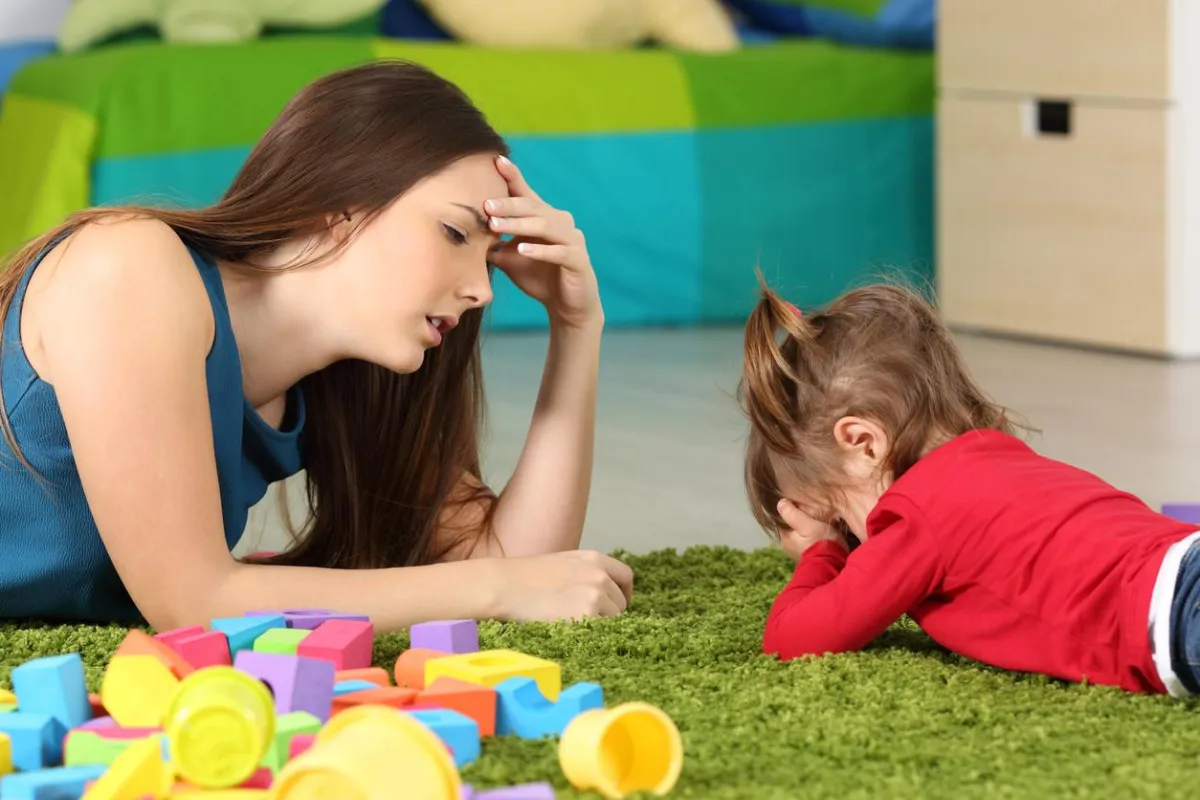
How to Communicate With Children When You Are Frustrated
Every early childhood educator has faced that moment—a surge of frustration when a child's actions seem to challenge your patience. Maybe it's a repeated behavior you’ve already addressed or a moment where clear instructions were overlooked. These emotions are normal, but how we respond as educators is crucial, not only for resolving the situation but for modeling healthy communication and emotional regulation for the child.
By approaching these moments with calm, intentional strategies, we can nurture understanding, teach important skills, and build positive relationships with the children in our care. Below, we’ll explore practical ways to communicate with children during these challenging moments, while keeping their developmental needs and perspectives in mind.
Pause and Calm Yourself Before Responding
When frustration takes over, it’s easy to react quickly and emotionally. But children are incredibly perceptive—they pick up on your tone, expression, and body language. If you’re upset, they’ll notice, and it may overwhelm or confuse them, making it harder to resolve the situation.
Here are steps to consider when calming yourself before engaging with a child:
Take a moment to breathe: Pause, take a deep breath, and give yourself a beat to regulate. Even a few seconds can help shift your mindset from reactional to intentional.
Step away if possible: Depending on the situation, stepping back (while ensuring the child’s safety) can provide you with the space to collect your thoughts.
Reset your perspective: Remind yourself that the child is learning and exploring. Their frustrating behavior isn’t personal—it’s part of their growth. Shifting your thinking can de-escalate your own emotions.
By calming yourself, you set an example for how to handle strong emotions—a skill children need to develop, too.
Provide Sensory Input to Improve Communication
Children, especially younger ones, don’t always respond well to verbal instruction alone, especially when emotions are heightened. Using sensory communication helps capture their attention and reinforces your words through visual and physical cues.
Here’s how to include sensory input in your communication:
Get down on their level: Physically lowering yourself to eye level helps create a connection. When a child can see your face, they’re more likely to focus on you. Maintaining eye contact (without being too intense) conveys calmness and care.
Use a gentle touch: Place a hand lightly on their shoulder or arm to signal you need their attention. This physical connection can ground and calm the child, helping them feel safe while you talk.
Point or gesture: Combine words with clear gestures. For example, if you’re asking a child to put away a toy, point to the toy or the storage area. This reinforces your message and provides a visual guide.
Speak in a calm, measured voice: Even when you’re upset, aim to keep your tone steady and calm. Children respond better to softer tones, which feel less threatening and help them process your words more clearly.
By engaging multiple senses—sight, hearing, and touch—you can better support young learners who are still developing their communication and comprehension skills.
See the Situation Through the Child's Eyes
Understanding the reason behind a child’s action can completely transform how you approach it. Every behavior has a purpose, especially in early childhood when children are still learning to express their needs, emotions, and desires.
Steps to Understand the Child’s Perspective:
Ask yourself "Why?": Before addressing the behavior, consider the possible reasons behind it. Was the child tired, hungry, or overwhelmed? Were they seeking attention, testing boundaries, or frustrated themselves? Understanding their world can help you respond more empathetically.
Acknowledge their feelings: Children often act out in frustration, sadness, or excitement. Acknowledging their feelings—“I see you’re upset” or “It looks like you’re feeling frustrated”—helps validate their emotions and can calm them enough to listen.
Explain, don't just correct: Instead of simply telling a child to “stop,” explain why their action wasn’t acceptable and guide them toward a better alternative.
For instance:
Instead of “Don’t grab,” you might say, “I understand you wanted the toy, but we need to ask first. Can you say, ‘Can I have a turn?’” Instead of “Stop jumping,” try, “I see you’re full of energy! But jumping here isn’t safe. How about we jump outside instead?”
Talk them through the situation: Help children connect the dots between their behavior and its impact on others. For example, if a child grabs from a friend, you could say, “When you took the block, it made [friend’s name] sad because they weren’t finished playing. What could we do to make it right?”
This approach not only resolves the immediate frustration but also teaches the child critical skills like empathy, reasoning, and problem-solving.
Build Connection, Not Division
Frustrating moments are inevitable, but they’re also opportunities to strengthen your bond with the children in your care. When you approach challenges calmly, use sensory communication, and strive to see things from the child’s perspective, you show them they’re valued and understood—even when mistakes happen.
To recap, here’s how to reframe these tricky situations with a child:
Pause and calm yourself first to model emotional regulation.
Use sensory communication—eye contact, touch, gestures—to connect effectively.
Seek understanding by seeing the situation through the child’s eyes.
Guide and explain instead of simply correcting, helping the child learn and grow.
Each interaction shapes a child’s trust in you, their ability to regulate emotions, and their understanding of the world. And when handled with care, these moments of frustration can become some of the most important teachable moments of all.
